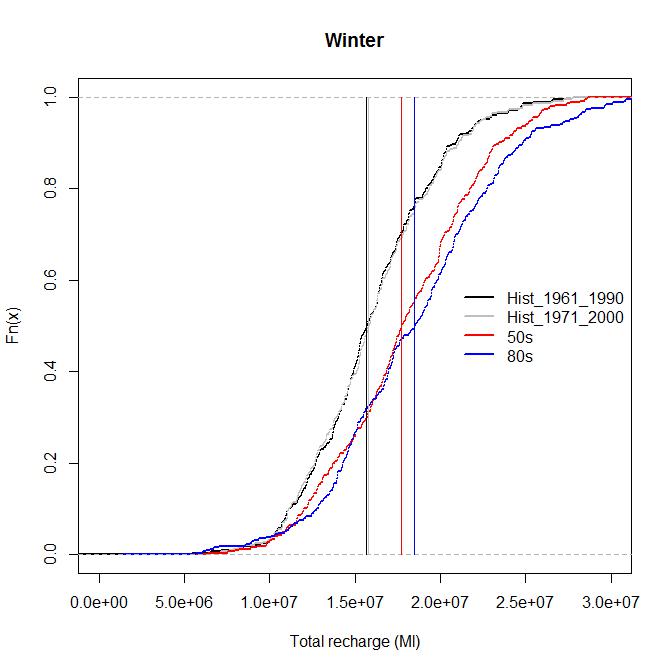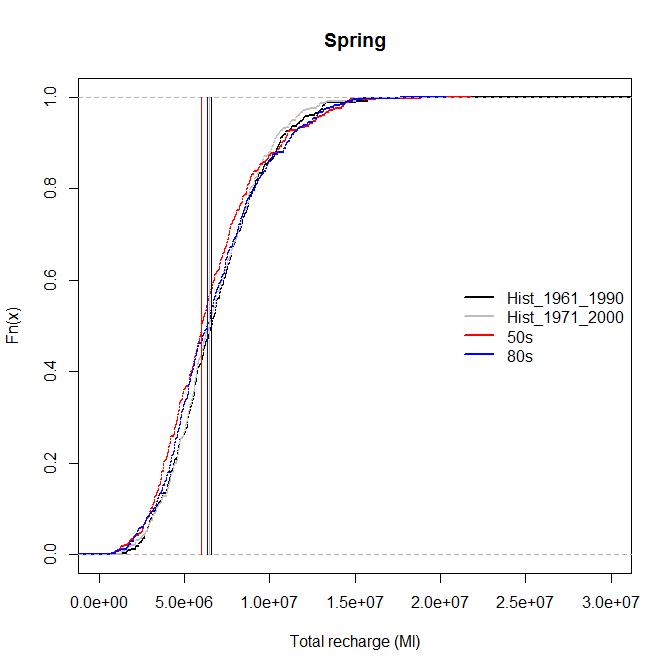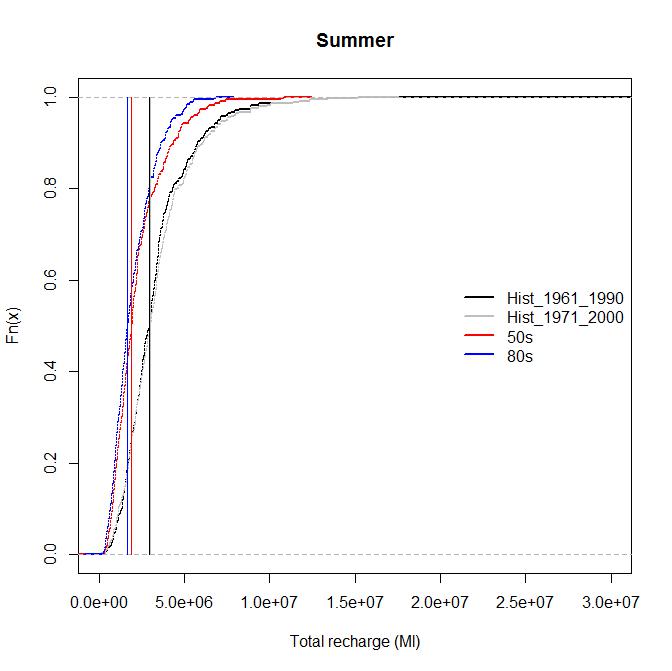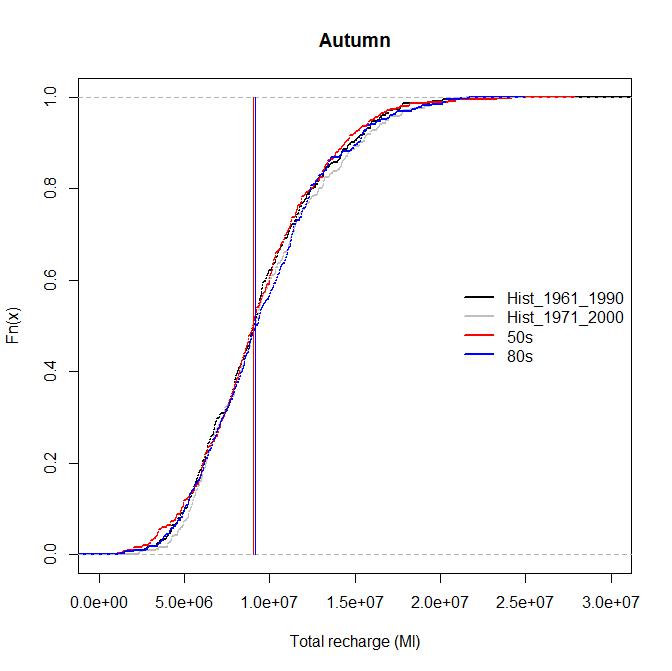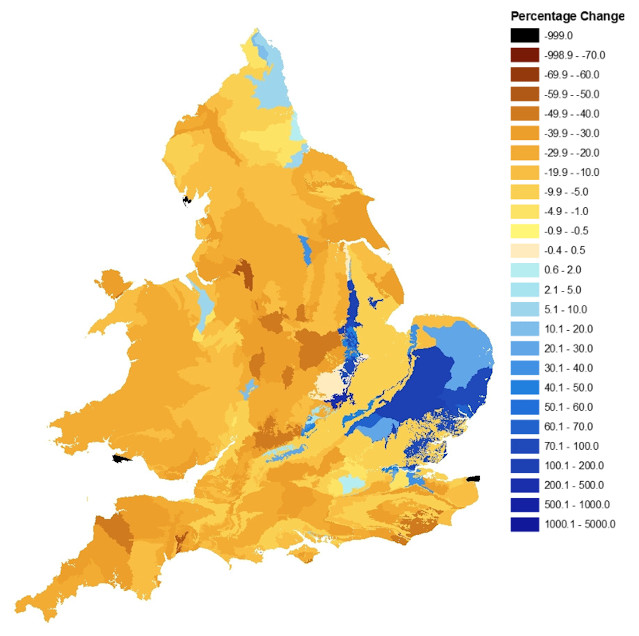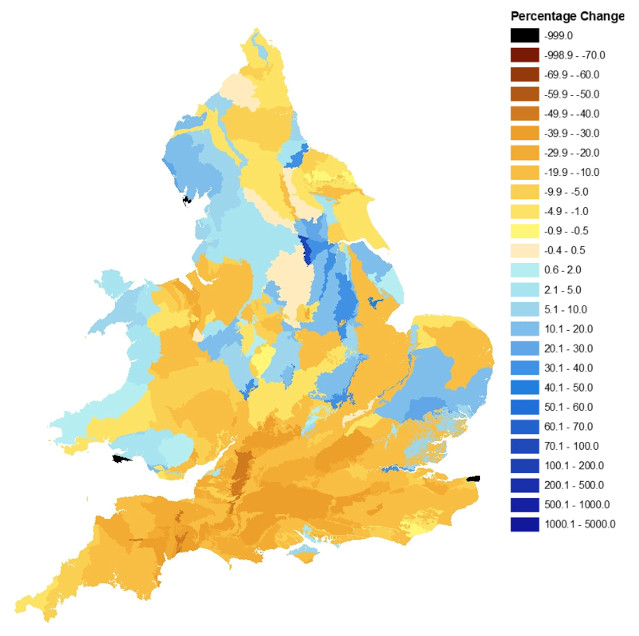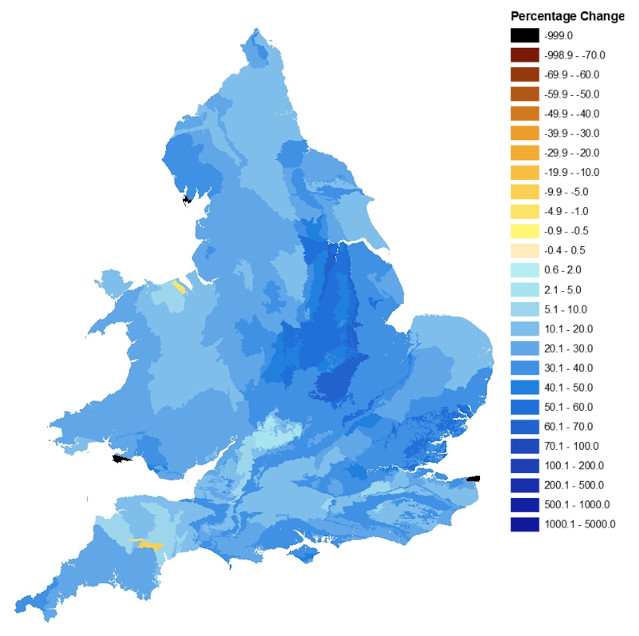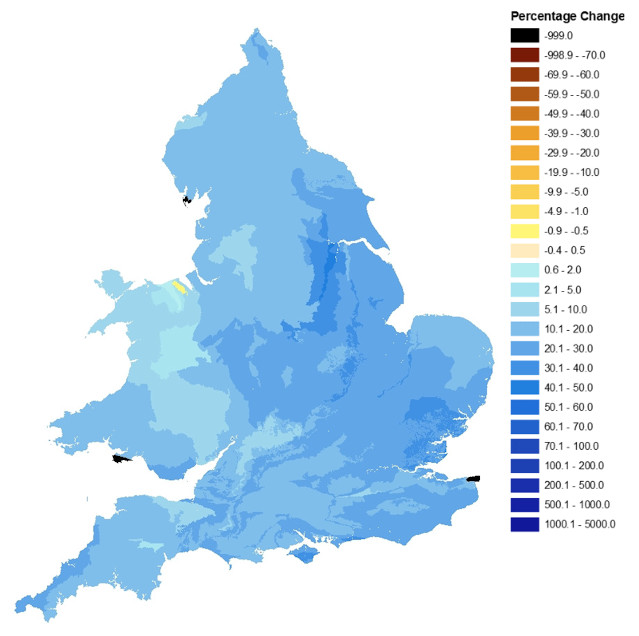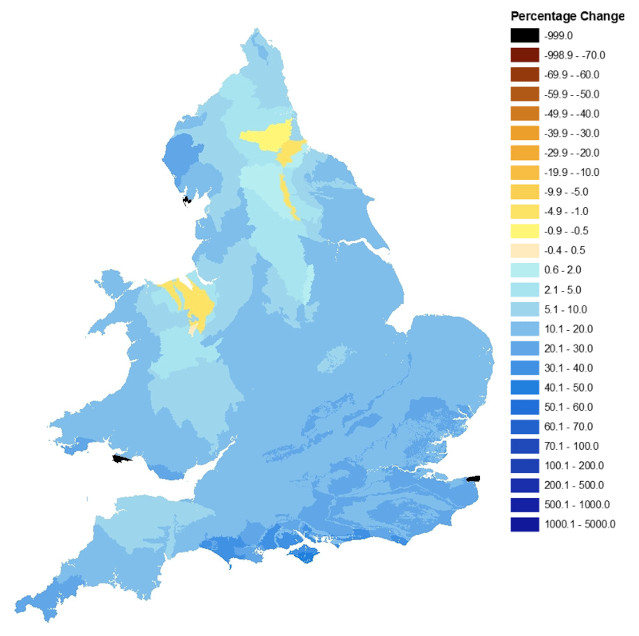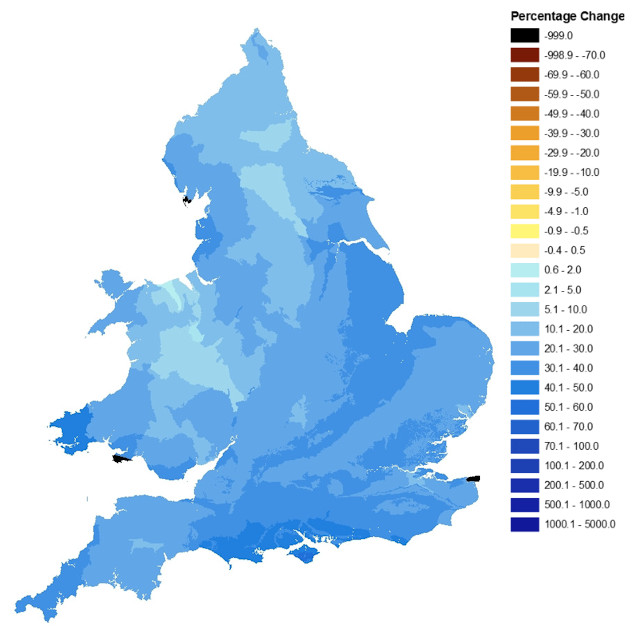Potential recharge and how it may change in the future
Climate change and recharge
Climate change will affect temperatures and rainfall rates, leading to modified patterns of groundwater recharge. Reduction in infiltration recharge leads to reduction in groundwater resources exploited for domestic and industrial use, and to reduction in river flows, affecting the ecology during dry seasons. The increase of infiltration recharge may lead to groundwater flooding.
The availability of a national-scale, distributed potential recharge model (ZOODRM) offers the opportunity to study possible infiltration recharge under future climates. Using UKCP09 projections of climate change in the UK available from the Met Office Hadley Centre, 150-year simulations of potential recharge are produced. Future potential recharge values are compared to the historical values to estimate the spatial changes in potential recharge.
The project has been co-funded by the Environment Agency (EA) and the BGS. A non-technical note was published by the EA with supporting materials available in a BGS project report.
Climate projections
Based on the 11 variants of the Hadley Centre Regional Climate Model 'HadRM3-PPE', which underpins the UKCP09 scenarios, the Centre of Ecology & Hydrology (CEH) applied a bias correction and downscaling procedure to produce 11 scenarios of future flow climate data. The HadRM3 is used as a perturbed physics ensemble approach to produce the 11 ensembles (Prudhomme et al., 2012) with one unperturbed example (afgcx) and ten variants (aixfa – afixq). These data are 1 km-gridded climate-time variant projections of rainfall and potential evaporation, and allow comparison of results across a range of scales and geographical regions. The data were produced as daily grids from 1 January 1950 to 30 November 2099.
Projections of changes in potential recharge values
Projections of potential recharge values have been produced for groundwater bodies in England and Wales as well as river basin management districts (RBMDs). Selected outputs from the model are available via the National Geoscience Data Centre.
The results confirm the dynamic between climate variability and climate change, with a stronger climate signal being observed in the 2080s than either the 2020s or the 2050s. This is evidenced by the increasing sign of climate change for the 2080s over the 2020s or 2050s. Generally, the recharge season is 'peakier' in the future, with greater recharge occurring in fewer months. There appears to be agreement between the ensemble outputs on this feature of predicted change.
When recharge volumes were produced for the RBMDs, the volumes tend to increase from the historical simulation to the 2020s/2050s, but more significantly in the 2080s. This suggests that recharge may increase as the climate change signal predominates, however there are a range of outcomes based on the ensemble members.
The recharge season appears to become shorter with a greater amount of recharge 'squeezed' into fewer months. This could result in greater 'lumpiness' of the recharge signal leading to flashier groundwater level response and potentially greater drought vulnerability. The latter might be the case if rainfall 'fails' for one month, since rainfall totals are reliant on fewer months. Furthermore, if potential recharge took place over fewer months, the lead in time for reaching drought status could also be reduced. These findings could have implications for water resources managers planning and responding to droughts in future. The increased vulnerability to drought could have knock-on impacts for groundwater users and for groundwater-dependent rivers, lakes and wetlands. Further groundwater hydrographs may become 'spikier', which may lead to increased risk of groundwater flooding.
Whilst this work offers concrete conclusions, there are limiting assumptions and caveats that need to be improved in future work. Mainly, actual recharge rather than potential recharge needs to be calculated: the current study does not take into account any change in the nature of the rainfall, i.e. increased intensity, and there may be increased amounts of rejected recharge due to a higher water table due to spikier groundwater response.
References
Prudhomme, C, Dadson, S, Morris, D, Williamson, J, Goodsell, G, Crooks, S, Boelee, L, Davies, H, Buys, G, Lafon, T, and Watts, G. 2012. Future flows climate: an ensemble of 1 km climate change projections for hydrological application in Great Britain. Earth System Science Data, 4(1), 143–148.
- BGS groundwater modelling publications
- Simple automatic time-stepping for improved simulation of groundwater hydrographs
- How to get your model results used : a guide to stakeholder engagement
- Grid refinement in Cartesian Coordinates for groundwater flow models using the Divergence Theorem and Taylor’s Series
- Numerical testing of conceptual models of groundwater flow: a case study using the Dumfries Basin aquifer

